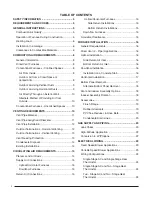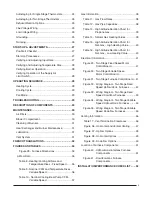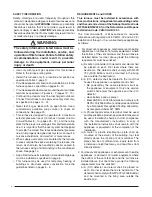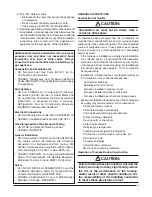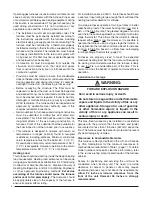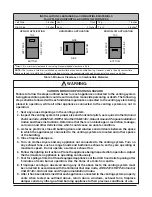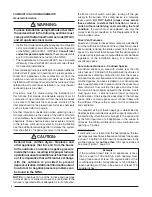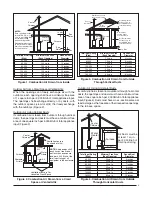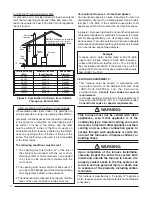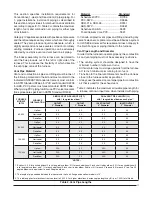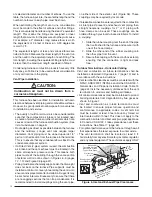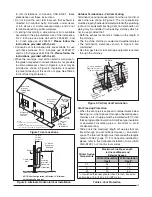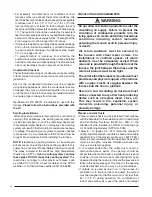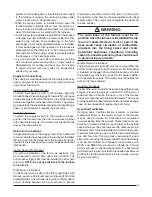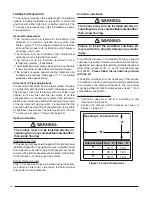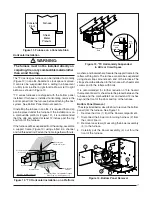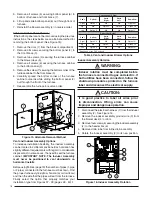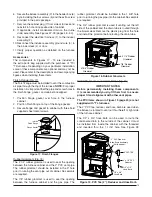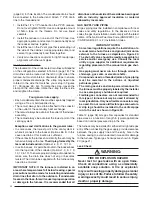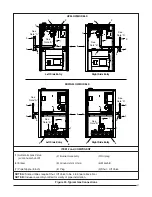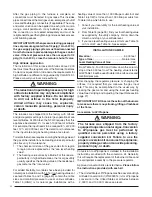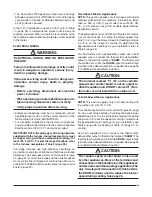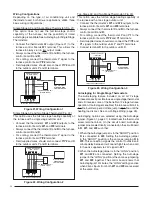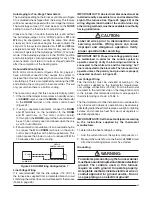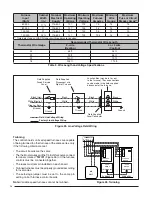
11
Table 2. Vent Pipe Lengths
FURNACE
MODELS
(BTU)
FURNACE
INSTALLATION
SINGLE VENT PIPE LENGTH (FT.)
with 1 long radius elbow**
DUAL VENT PIPE LENGTH (ft.)
with 1 long radius elbow on each pipe**
OUTLET
2” Diameter
OUTLET
3” Diameter
INLET/OUTLET
2” Diameter
INLET/OUTLET
3” Diameter
60,000
Upfl ow
90
90
90
90
Horizontal
50
90
50
90
Downfl ow
30
90
30
90
80,000
Upfl ow
90
90
90
90
Horizontal
30
90
30
90
Downfl ow
30
90
30
90
100,000
Upfl ow
60
90
60
90
Horizontal
30
90
30
90
Downfl ow
30
90
25
90
120,000
Upfl ow
N/A
90
N/A
90
Horizontal
N/A
90
N/A
90
Downfl ow
N/A
90
N/A
90
*NOTES:
1. Subtract 2.5 ft. for each additional 2 inch long radius elbow, 5 ft. for each additional 2 inch short radius elbow, 3.5 ft. for each additional 3
inch long radius elbow, and 7 ft. for each additional 3 inch short radius elbow. Subtract 5 ft for each 2” tee and 8 ft for each 3” tee. Two 45
degree elbows are equivalent to one 90 degree elbow.
2. The length of pipe needed between the inducer and the fi nish fl ange on downfl ow models is 15”.
3. This table applies for elevations from sea level to 2,000 ft. For higher elevations, decrease pipe lengths by 8% per 1,000 ft of altitude.
This section specifi es installation requirements for
Conventional (1-pipe) and Direct Vent (2-pipe) piping. For
1- pipe installations, install vent piping as described in
this section and provide air for combustion and ventilation
according to pages 8 - 10. Table 2 contains the maximum
length of vent and combustion air piping for either type
of installation.
Category IV appliances operate with positive vent pressure
and therefore require vent systems which are thoroughly
sealed. They also produce liquid condensate, which is
slightly acidic and can cause severe corrosion of ordinary
venting materials. Furnace operation can be adversely
affected by restrictive vent and combustion air piping.
The inducer assembly on this furnace can be rotated to
vent the fl ue products out of the left or right side of the
furnace. This increases the fl exibility of which direction
the vent pipe can exit the furnace.
Vent Pipe Material
Vent and combustion air pipe and fi ttings must be one of
the following materials in the list and must conform to the
indicated ANSI/ASTM standards. Cement must conform
to ASTM Standard D2564 for PVC and Standard D2235
for ABS. PVC primer must meet standard ASTM F656.
When joining PVC piping to ABS, use PVC solvent cement.
(See procedure specifi ed in ASTM Standard D3138)
Material
.......................................
Standard
Schedule
40PVC
............................D1785
PVC-DWV
....................................... D2665
SDR-21 & SDR-26 ..........................D2241
ABS-DWV
....................................... D2661
Schedule 40 ABS ............................ F628
Foam/Cellular Core PVC ................ F891
In Canada, all plastic vent pipes and fi ttings including any
cement, cleaners, or primers must be certifi ed as a system
to ULC S636. However this requirement does not apply to
the fi nish fl anges or piping internal to the furnace.
Vent Pipe Length and Diameter
In order for the furnace to operate properly, the combustion
air and vent piping must not be excessively restrictive.
• The venting system should be designed to have the
minimum number of elbows or turns.
• All horizontal runs must slope upwards from the furnace
at 1/4 inch minimum per running foot of vent.
• Transition to the fi nal vent diameter should be done as
close to the furnace outlet as practical.
• Always use the same size or a larger pipe for combustion
air that is used for the exhaust vent.
Table 2 indicates the maximum allowable pipe length for
a furnace of known input rate, when installed with piping


